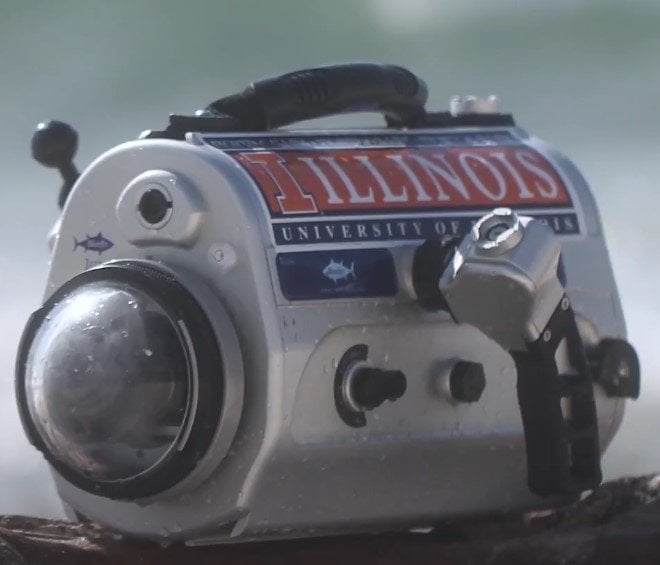A new “shrimp camera” will give researchers new insight into an underwater landscape by mimicking the eyesight of aquatic animals.
University of Illinois researchers have now developed an underwater GPS method that can use polarization information collected with this shrimp camera that mimics the eyes of the mantis shrimp. The findings were published in Scientific Advances, and are significant in that they’re the first to demonstrate a passive underwater GPS using polarization of underwater light.
The shrimp camera is a variation of the polarization imager named the Mantis Cam and takes advantage of how light bends when it passes through water – and how it bounces from particles and water molecules. Using this polarization, the team was able to develop a novel new underwater GPS method that has major implications for the field of aquatic research.
According to Viktor Gruev, an Illinois professor of electrical and computer engineering and a professor of the Carle Illinois College of Medicine, “We collected underwater polarization data from all over the world in our work with marine biologists and noticed that the polarization patterns of the water were constantly changing… This was in stark contrast to what biologists thought about underwater polarization information. They thought the patterns were a result of a camera malfunction, but we were pretty sure of our technology, so I knew this phenomenon warranted further investigation.”
With this new polarization data, Gruev and his graduate student and co-author, Samuel Powell, managed to develop the shrimp camera that estimates the sun’s heading and elevation angle and allows the user to figure out GPS coordinates by knowing both the date and time of the filming. This is a passive method of tracking, and the shrimp camera should make it easier to track the migration of various species over time.
“We tested our underwater GPS method by pairing our bio-inspired camera with an electronic compass and tilt sensor to measure the underwater polarization data at a variety of sites around the globe, depths, wind conditions and times of day,” said Gruev, “We found that we can locate our position on the planet within an accuracy of 61 km.”
Powell expanded on the implications of this research, really driving home the fact that this new shrimp camera technology would open up new ways for both people and robots to navigate underwater and perhaps assist with new research.
“We could use our underwater GPS method to help locate missing aircraft, or even create a detailed map of the seafloor,” Powell said. “Robots swarms equipped with our sensors could provide a low-cost means of underwater remote sensing – it would certainly be more cost-effective than current methods.”
“Animals like turtles and eels, for example, probably use a slew of sensors to navigate their annual migration routes that take them thousands of miles across oceans,” Gruev said. “Those sensors may include a combination of magnetic, olfactory and possibly – as our research suggests – visual cues based on polarization information.”
Moving forward, this shrimp camera should see wider applications and may serve to further advance our knowledge when it comes to underwater navigation.





